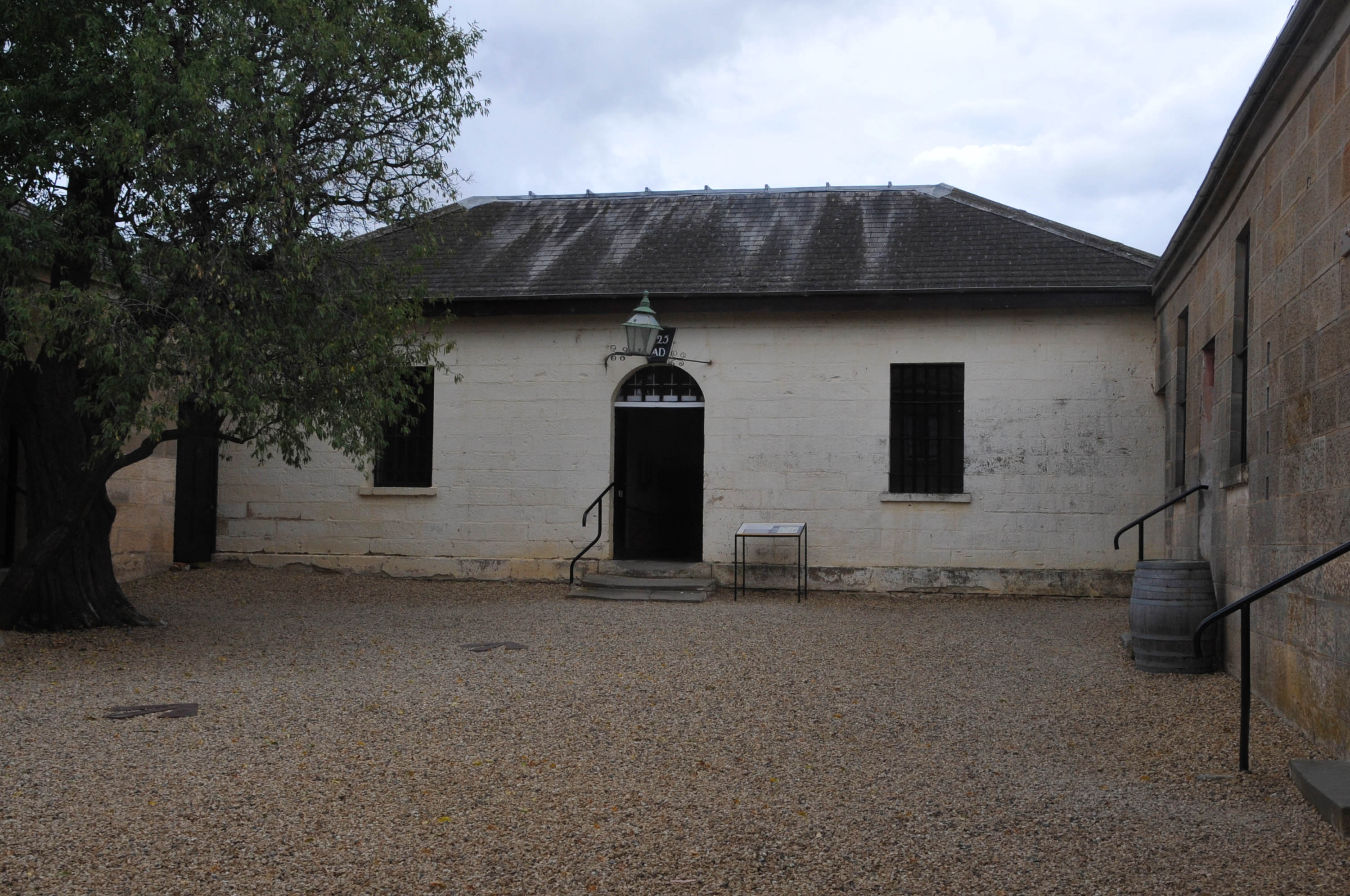The Tasmanian town of Richmond sits beside the Coal River, 25 km north-east of Hobart, set in an area surrounded by green fields and tree-studded hills.
Merrimeneer Aboriginal People
Until about 12,000 years ago, sea levels were much lower, and Tasmania was joined to the Australian mainland by a land bridge. When sea levels rose, Tasmania became isolated from the mainland, and the rest of the world, until Abel Janszoon Tasman arrived in 1642 and became the first European to discover the island.
Until about 12,000 years ago, sea levels were much lower, and Tasmania was joined to the Australian mainland by a land bridge. When sea levels rose, Tasmania became isolated from the mainland, and the rest of the world, until Abel Janszoon Tasman arrived in 1642 and became the first European to discover the island.
The Oyster Bay/Big River or Merrimeneer people lived a hunter-gatherer lifestyle across central Tasmania for thousands of years before the arrival of Europeans. The Richmond area, in particular, provided fresh water, sheltering hills and plenty of animal life and other food sources.
Tasmanian Aboriginal people would often refer to themselves as "Palawa", meaning the "first man", believed to be created from the kangaroo by a creation spirit.
When the British explorers, Matthew Flinders and George Bass circumnavigated Tasmania by ship in 1798-99, they saw shelters and deserted fires along the Jordan River, belonging to the Aboriginal people. As did the French naturalist, François Auguste Péron, in 1802.
 |
| At ningina tunapri Tasmanian Aboriginal gallery |
Beginning in 1829, George Augustus Robinson set out from Hobart Town with a number of Trouwunnan Aboriginal people on a walk called the Friendly Missions to stop the hostility and persuade Aboriginal people to move to settlements.
French explorers arrived in 1772, following Abel Janszoon Tasman's 1642 arrival. The first English settlement was established in 1803.
The two first settlements of Tasmania began at Risdon in 1803 and at Sullivan’s Cove in 1804. By 1806, there was significant conflict between the Aboriginal people and Europeans; especially, as the settler population grew and cleared land and interfered with Aboriginal hunting and food sources.
It is said that on the 5th of January 1832, the last of the Big River and Oyster Bay people performed a corroboree in front of Bothwell’s Castle Hotel and then, they were taken to Flinders Island.
First Settlements
First Settlements
The kidnapping of Aboriginal children for labour was so prevalent in the Oyster Bay area that, in 1819, Governor Sorell spoke out against the “cruelty ... of depriving the natives of their children”.
By 1820, there were around 8000 sheep in the Coal River Valley.
In 1803, an exploration party led by Lieutenant John Bowen crossed the hills from the Derwent Valley in search of suitable land for a settlement. The area of Richmond was described by these explorers as "a rich and fertile land where, in many places, the plough may be used immediately".
When Governor Lachlan Macquarie visited Van Diemen's Land in 1811, squatters were already growing crops, and grazing sheep and cattle, in the Richmond area.
The successful farming of wheat around Richmond motivated Lieutenant William Sorrell to establish a township at the Richmond Park Estate in 1824.
The Richmond Bridge was completed in 1825, built of sandstone quarried from Butchers Hill, and transported by convicts using hand carts.
The Convict Era
Between 1803 to 1853, more than 73,500 convicts were transported to Tasmania. The Richmond Gaol, which began construction in 1825, predates the establishment of the penal colony at Port Arthur in 1833.
George Gunning was a soldier who went to Van Diemen's Land from Sydney in 1810. In 1812, he was appointed inspector of public works and in the following year, he was granted forty-four acres (18 ha) at the Coal River (Richmond). The magistrate, J.H. Butcher, was notedly anti-convict and vehemently anti-Catholic. James Lord was also an overseer and Henry Buscombe, a builder.
The construction of Richmond Gaol, which is the oldest intact gaol in Australia, began in 1825. The gaol included chain gang sleeping rooms, a flogging yard, a cookhouse and holding rooms and a female solitary confinement cell. Hangings, however, did not occur at Richmond Gaol, though flagellations (whippings) on wooden pyramid did.
Not only did the forced labour of these convicts provide the manpower to build the gaol, but the convicts as virtual slaves, also toiled at farming, cutting sandstone and brick making.
The Town Develops
The courthouse was built in 1825-26.
.jpg) |
| Bill Thompson (Tasmanian convict). State Library of Tasmania |
The Town Develops
The Richmond Arms Hotel was established in 1827. However, the hotel was destroyed by fire in 1888 and the Commercial Hotel was built in its place. The hotel was renamed as The Richmond Arms in 1972.
James Buscombe was assigned a number of convicts to assist with the construction of Prospect House in 1830.
According to Quaker missionary James Backhouse, Richmond had a courthouse, a gaol, a windmill and about thirty houses by 1832.
According to Quaker missionary James Backhouse, Richmond had a courthouse, a gaol, a windmill and about thirty houses by 1832.
Richmond Post Office opened on 1 June 1832.
 |
| Richmond Post Office, TAS, Australasian (Melbourne, Vic. : 1864 - 1946), Saturday 5 May 1923 |
St Luke’s was built in 1834-1836 and is the oldest Anglican Church in Australia.
St John's Catholic Church, built in 1836, is the oldest Roman Catholic church in Australia.Georgian Architecture
By 1836 Richmond was Tasmania’s third-largest town, with an important military outpost and convict station.
By 1836 Richmond was Tasmania’s third-largest town, with an important military outpost and convict station.
The Richmond district was dotted with solid buildings of Georgian architecture and had two churches built in the style of Gothic revival: St. Luke’s and St. John’s. The town had flour grain mills and the wheat farms of Richmond supplied Tasmania's wheat needs and also shipped wheat as far afield as New South Wales.
Late in 1839, the French explorer Jules-Sébastien-César Dumont, visited Tasmania, just before his second Antarctic expedition. During this visit, eighteen French crewmen were hospitalised with dysentery (though many erroneously believed they had typhus). Some of these men were hospitalised at Richmond.
 |
| Riviere Derwent pres de Richemont Design by L. Le Breton; Lithograph by Jacques Guiaud. Tasmanian Archives and Heritage Office. French Expedition visit to Van Diemen's Land circa 1837-1840 |
Settlers Came
Joseph William Nichols was born in Middlesex, England, in 1812 and transported to Tasmania on the "Enchantress," arriving in 1833, for receiving stolen goods. He married Mary Jane Jacobs in 1841 and in 1855, he was granted 45 acres of land on the west side of Napolean Street. By 1857, J.W. Nichols was operating a general store in Richmond. His son, William Henry Nichols, later operated a stagecoach service to Hobart.
Other early settler families include the Kellys, Andersons, and Ross. While Mr Gordon was the Police Magistrate of the extensive district of Richmond.
In 1866, the Presentation Sisters arrived from Ireland and they were stationed at the Richmond Catholic school for two years, before moving to Hobart.
Other early settler families include the Kellys, Andersons, and Ross. While Mr Gordon was the Police Magistrate of the extensive district of Richmond.
In 1866, the Presentation Sisters arrived from Ireland and they were stationed at the Richmond Catholic school for two years, before moving to Hobart.
In the early days, Richmond had been an important military staging post and convict station linking Hobart with Port Arthur. However, with the completion of the Sorell Causeway in 1874, the main road now bypassed Richmond, leading to the decline of the town. And as the causeway had a swinging section to allow vessels to pass through to Richmond, it also caused the mouth of the Coal River to silt up, so water transport from Richmond petered out.
1900s
Daniel Pitt was a successful fellmonger (a dealer in hides or skins) who bought the first rabbit skins in the district around 1900. Pitt bought large amounts of rabbit, possum, wallaby, sheep and other skins, as well as wool and poultry and he had a small farm, was treasurer of the Road Trust and he was a member of the Richmond Racing Club.
 |
| Richmond ( shows Roman Catholic church and river), Tasmania (c1900s). Tasmanian Archive and Heritage Office |
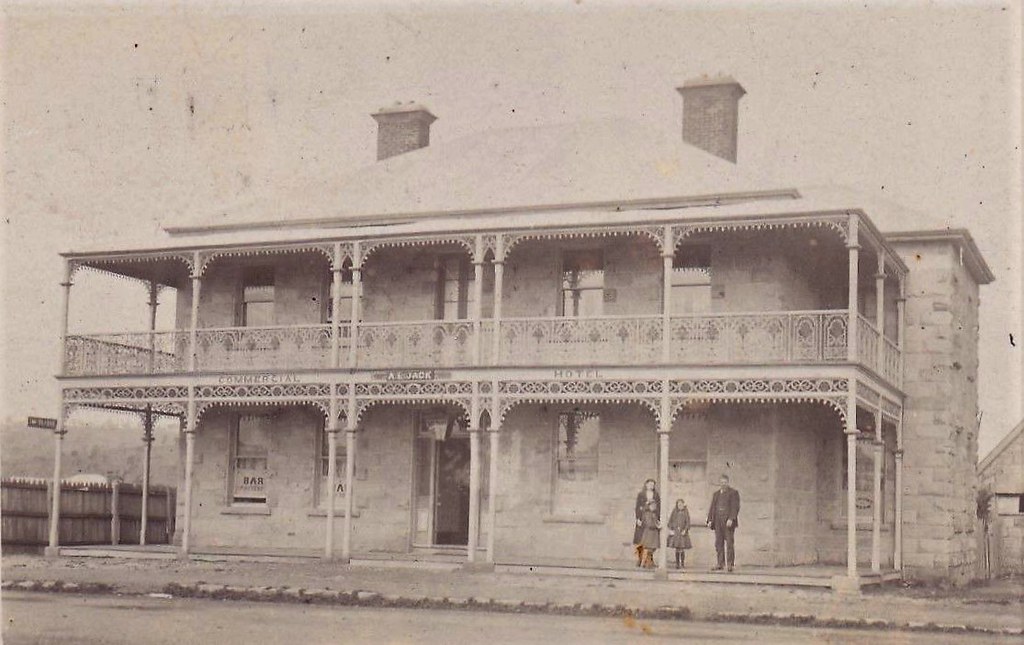 |
| COMMERCIAL HOTEL, RICHMOND, TASMANIA - 1910 A.E. Jack, Proprietor Aussie Mobs |
WWI
 |
| Mr Winston Churchill Simmons (1827–1916) was a relative of Britain's Prime Minister (Sir Winston Churchill), built "Churchill" located 5 kms from Richmond on the banks of the Coal River, TAS, in 1845. |
1920s
 |
| Australasian (Melbourne, Vic. : 1864 - 1946), Saturday 5 May 1923 |
 |
| The new police dwelling at Richmond which has been taken over by Trooper C. Williams, who has charge of the district. Mercury (Hobart, Tas. : 1860 - 1954), Friday 24 June 1927 |
1930s
 |
| Mr John Oakley, of Richmond (Tas), is a well-known sheep breeder, nearly 96 years of age. Weekly Times (Melbourne, Vic. : 1869 - 1954), Saturday 20 November 1937 |
1940s and WWII
 |
Militiamen of the 12th Mixed Brigade this week carried out field exercises in the Richmond Tea Tree district, TAS. Mercury (Hobart, Tas. : 1860 - 1954), Saturday 13 April 1940 |
 |
The Women s Land Army at their field day held at the property of Mr C T Jones Lowlands Richmond, TAS. T Mercury (Hobart, Tas. : 1860 - 1954), Monday 6 January 1941 |
 |
| Richmond, TAS, Mercury (Hobart, Tas. : 1860 - 1954), Thursday 15 June 1944 |
 |
| Richmond Show, Tas, Mercury (Hobart, Tas. : 1860 - 1954), Monday 22 November 1948 |
1950s
 |
| View of Richmond, TAS, Mercury (Hobart, Tas. : 1860 - 1954), Thursday 11 June 1953 |
Around Richmond
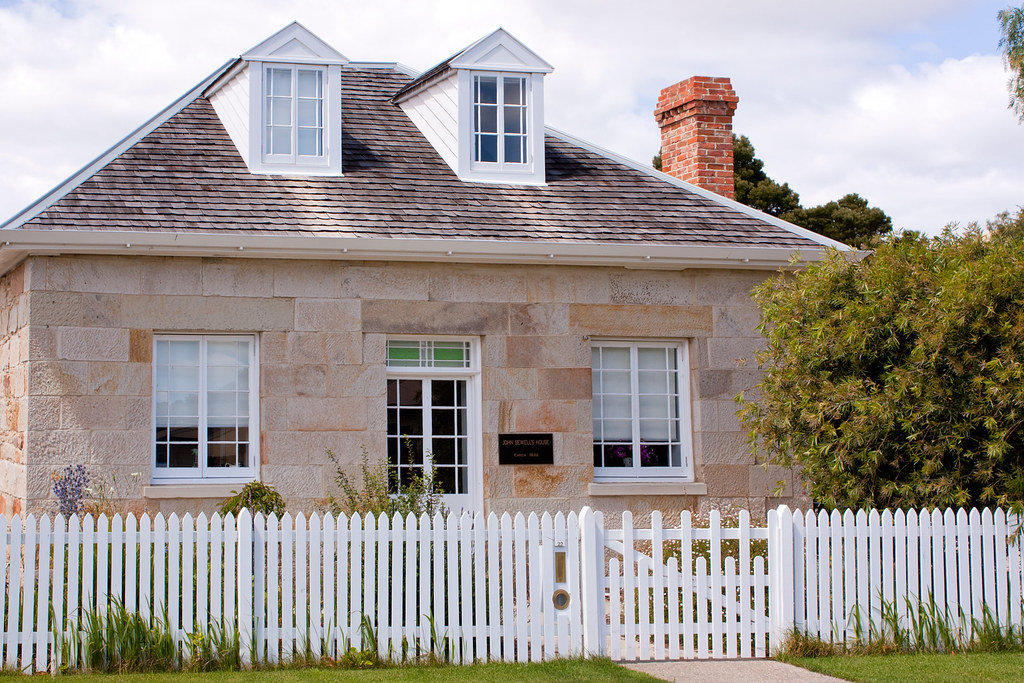 |
| Sandstone Cottage, Richmond, Tasmania Australia, Rexness |
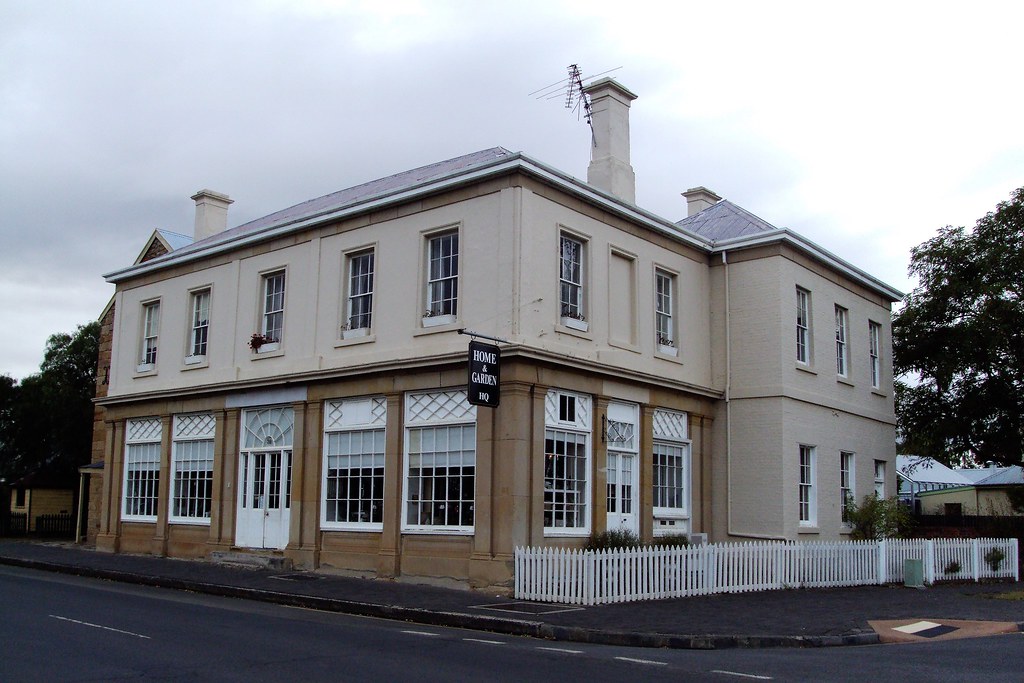 |
| Richmond Tasmania. Old inn converted into a house and garden shop. denisbin |
 |
| The Old Rectory with St Lukes Anglican Church. Andrew Matthews |
 |
| Inside Richmond Gaol, Richmond, Tasmania. Nicholas Cull Building of the gaol commenced in 1825, and predates the establishment of the penal colony at Port Arthur in 1833 |
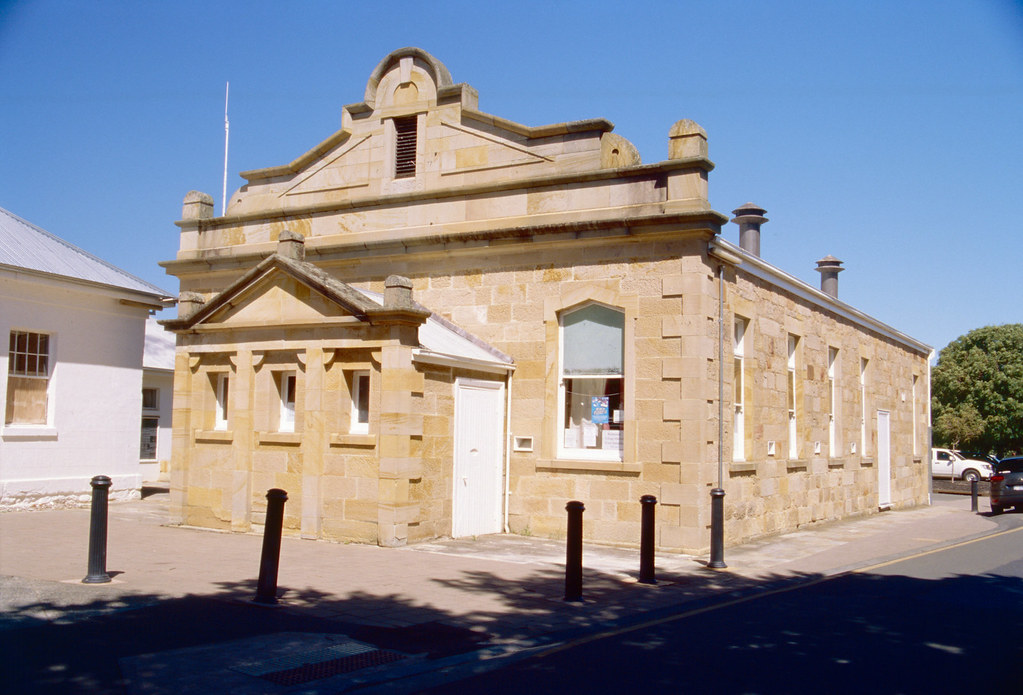 |
| Old Richmond Courthouse, Tasmania. Regency style circa, 1825. Nicholas Cull |
 |
| The Richmond Arms Hotel., Richmond, Tasmania, JERRYE & ROY KLOTZ MD built in 1888 as the Commercial Hotel, replaced the Lennox Arms Hotel, built in 1827 and destroyed by fire |
 |
| Richmond, Tasmania |
 |
| House in Richmond, Tasmania |
 |
| Ashmore Tea Rooms, Richmond, Tasmania, built circa 1850s as a general store by William Ashmore. Later operated by Miss Bentley and Miss Jacobs |
 |
| The Sergeant’s Cottage, Richmond Tasmania |
 |
| Model village of early Hobart, Richmond, Tasmania |
 |
| Mill House, Richmond, Tasmania, circa 1853, flour steam mill, built by George Burn in 1850 |
.jpg) |
| Main Street of Richmond, Tasmania |
| St Luke Anglican Church, Richmond Tasmania, 1825, Land donated by Mr Butcher |
 |
| The Old Schoolhouse, Richmond, Tasmania, built in 1834, the oldest government school in Australia |
 |
| Congregational Church, Richmond, Tasmania, commenced services in 1875 |
 |
| St John the Evangelist Catholic Church, Richmond, Tasmania. Bishop Polding blessed the foundation stone for the new church in September 1835 |
 |
| Saddler's Court was a saddlery and later, a general store, Richmond, Tasmania |







